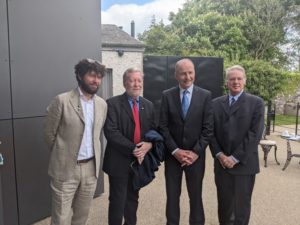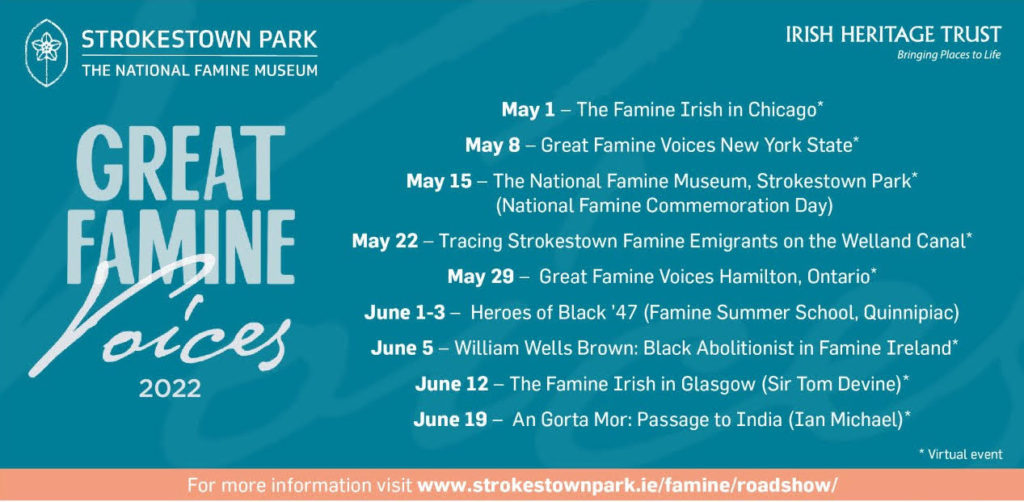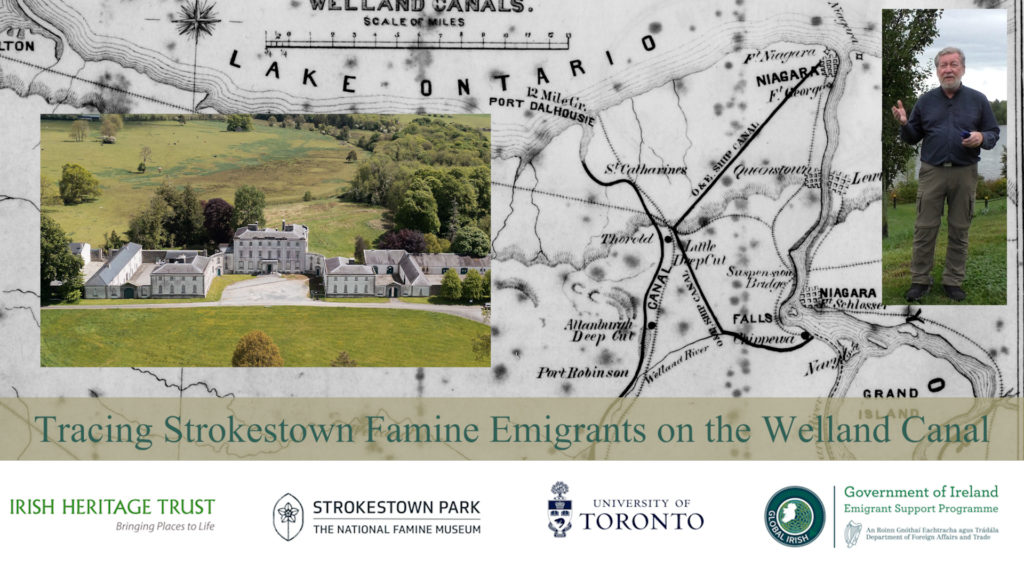
In Tracing Strokestown Famine Emigrants on the Welland Canal (33:58), Professor Mark McGowan from the University of Toronto follows in the footsteps of some of the 1,490 assisted migrants from the Strokestown Park estate (now home of the National Famine Museum) in 1847 who resettled in Canada’s Niagara region to find work on the Welland Canal. He uses newly discovered correspondence from the Strokestown Park Famine Archive between the landlord Major Denis Mahon and his agent John Ross Mahon to explain how the emigration scheme was planned. He also suggests that the horrific fate of former tenants who crossed the Atlantic on-board coffin ships such as the Virginius and Naomi — where almost half of them perished — was less attributable to the landlord than previously thought, though he was assassinated shortly thereafter in retribution. In tracing their fate, the film brings to life the tragic and uplifting stories of Strokestown’s Famine emigrants who fled Ireland in 1847 to resettle on the Welland Canal.
Professor Mark McGowan (University of Toronto) is a leading expert on the Famine Irish in Canada. He is a partner with the National Famine Museum, Strokestown Park, and the Irish Heritage Trust on the Great Famine Voices project.
Tracing Strokestown Famine Emigrants on the Welland Canal is part of the Great Famine Voices 2022 season hosted by the National Famine Museum, Strokestown Park, and Irish Heritage Trust with funding from the Government of Ireland Emigrant Support Programme.
Great Famine Voices 2022 Schedule



My ancestors the Foley’s came to Canada and settled in Thorold Ontario (Welland and Lincoln counties) in the 1840, but we can’t trace their roots to pin point exactly where they came from. We assume they came from county Cork or Tipperary ? My great grandfather worked on the St. Lawerence Seaway Authorities in the early 1900’s as part of the Welland Canal.